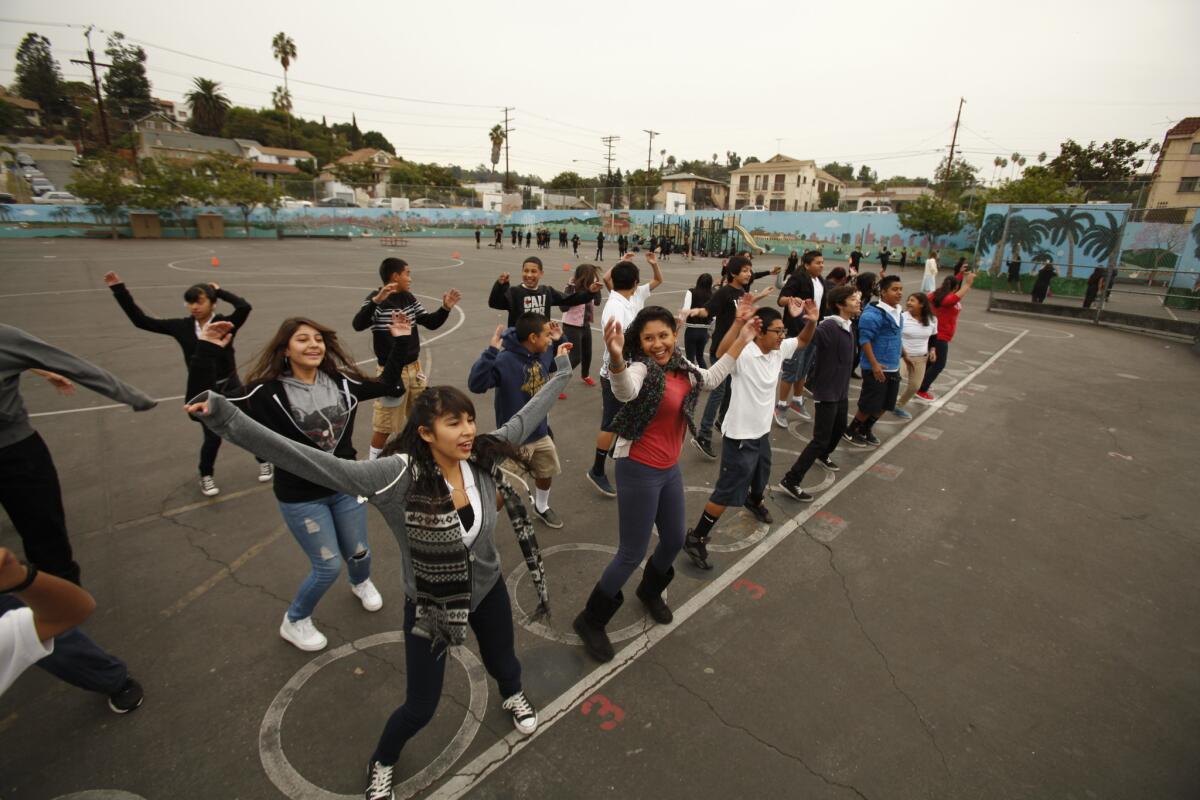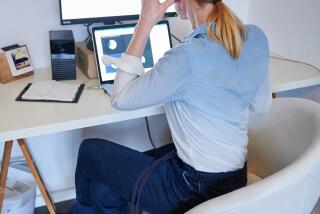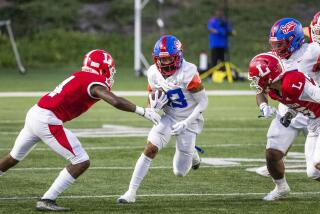More exercise at school may be key to improving teensâ health

Eighth-grade students work out at Logan Street Elementary School in Echo Park. A new study finds that American adolescents get the bulk of their exercise at school, but still fall short of official targets for physical activity.
Researchers have a prescription for improving the health of Americaâs teens: Get more exercise at school.
Public health experts recommend that kids spend at least 30 minutes of the school day engaged in moderate to vigorous physical activity. That would get them halfway to the goal of exercising for at least an hour each day.
To make that happen, a typical school would need to devote 7.5% of its instructional time to physical fitness. Instead, students in the study spent a mere 4.8% of their school day â or 23.2 minutes â improving their bodies instead of their minds, according to a study published Tuesday in the journal Pediatrics.
âBecause adolescents spend so much time at school, even a small increase in the proportion of at-school time spent physically active could lead to meaningful increases in overall physical activity and metabolic health,â the study authors wrote.
American teens have a reputation for being among the most sedentary in the world, with only 8% getting the recommended 60 minutes of exercise per day. That exercise deficit sets them up for a a host of chronic diseases, including type 2 diabetes and heart disease. It also saps their brainpower and causes their grades to suffer, studies show.
To see when and where teens were (and werenât) getting exercise throughout the day, researchers outfitted 549 volunteers from Seattle and Baltimore with GPS monitors and activity trackers. The trackers recorded their location and their movement once every 30 seconds for about a week.
The volunteers â ages 12 to 16 â spent more of their waking hours at school than anywhere else, according to the GPS readings. On average, they passed 42% of their time at school, 28% at home, 13% in their neighborhoods, 4% near their schools, and the rest elsewhere.
Meanwhile, the activity trackers revealed that the students averaged 39.4 minutes of moderate to vigorous physical activity over the course of each day. On school days, 55% of those minutes were tallied at school.
When weekends were factored in, 42% of the weekâs total exercise occurred on school grounds. The amount of time teens spent exercising was more than 25% higher on school days than on weekend days, according to the study.
Although schools accounted for biggest share of total exercise, they were also the places where teens were most likely to be sedentary. Over the course of a week, 4.8% of time at school was spent getting exercise. That compared with 5.3% of time at home, 9.5% of time in oneâs neighborhood, 9.7% of time near school and 7.1% of time in other places.
In each of these locations, boys got more exercise than girls, the researchers found. Policymakers should keep that in mind when designing programs to boost physical fitness among teens, the study authors wrote.
The analysis turned up no differences in exercise patterns based on teensâ race or ethnicity, or whether their parents had a college degree.
In addition to endorsing more physical education at school, the researchers suggested that teens spend more time in the areas near their homes and schools, since those were places where teens tended to be more active.
âIncreasing time in home and school neighborhoods might increase physical activity, partly by reducing time spent in less active locations,â they wrote.
Follow me on Twitter @LATkarenkaplan and âlikeâ Los Angeles Times Science & Health on Facebook.







